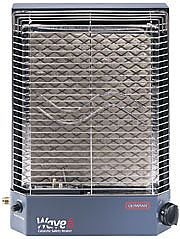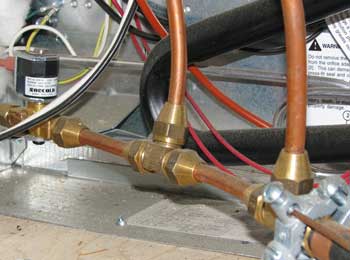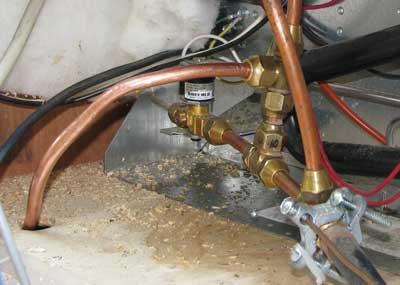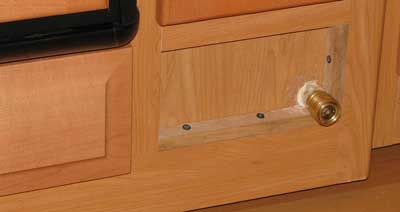| Saturday, December 26, 2009: OK, let me be blunt, I see NO USEFUL PURPOSE for the Olympian Catalytic Safety Heater shown above (scroll up). I say this first because it simply does not produce enough heat. At maximum setting you should get 6,000 Btu be we have found that our Mr Heater gives off more heat at the LOW setting (4000 Btu) than does the Wave 6. The Mr. Heater can be found for around $100 while the Olympian cost $350. Secondly, the Olympian needed to be handled very carefully and always covered during non-use to be sure no injury or dust fell on the catalytic pad. There was always a danger of "poisoning" if the pad was damaged. I was fortunate to be able to sell the catalytic heater for about 2/3 what I paid for it. I replaced it with the Empire SR-18T pictured to the right. |
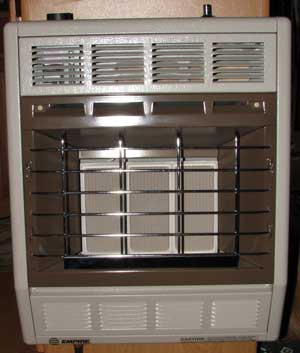 |
It operates on a thermostat, is manufactured in the USA, puts out 18,000 Btu which easily heats the entire trailer. Granted, we haven't tested it in cold Montana weather yet but I expect it to work VERY well. I was able to use the same propane connection for this heater as I installed for the Wave 6. Surprisingly, this heater is still cheaper than the Wave 6 at $278. You can get one slightly cheaper with a manual control where you can select heat using 1 , 2 or 3 bricks. You can also get feet for this heater if you wish to keep it portable as we did the Wave 6. We chose to mount the heater to a cabinet wall.
So here is my recommendation, do NOT buy a catalytic heater under ANY circumstance. If you have a small area to heat, buy a Mr. Heater and connect to a larger propane source than the little green propane bottles. This works very well. We still have ours and will likely use it in the bathroom - bedroom area when we are in colder areas. To heat the whole RV, get the Empire heater in the size you need (they come in several different sizes). The 18,000 Btu heater works well for our 36 foot three slide fifth wheel. There are cheaper Chinese made brands of these heaters available ... and when you need parts for that Chinese heater ... where will you get them? I showed how to install one of these previously when my friend Terry installed one in his RV.
A note about RV manufacturers ... don't you find it strange that we must search for a decent RV heater when all these RV's come equipped with forced air furnaces with ducts leading to every area of the RV? For those of us who don't plug into city power (thousands of us in the desert right now), those furnaces use a lot of our stored solar power to run the blowers. They are also only about 65% efficient (and that percentage is generous), while both the Mr. Heater and the Empire are about 99.5% efficient. I suppose the furnace is wonderful if you have unlimited power resources and don't care that 35% of the heat they create is blown outside. Just stand next to the outside furnace vent when it's in operation and check it out. Of course, when it drops below 20° outside, we have no choice but to use the furnace to heat the basement so the water pipes don't freeze.
Finally, if you use a Mr. Heater or Empire Radiant heater, be sure to follow all ventalation instructions. These things burn oxygen so if you are in an enclosed vehicle which is airtight (like a weather sealed RV), guess what happens if you burn up all the oxygen? A good heater, like the Empire, has a safety feature which turns the unit off if the oxygen level falls too low. |

